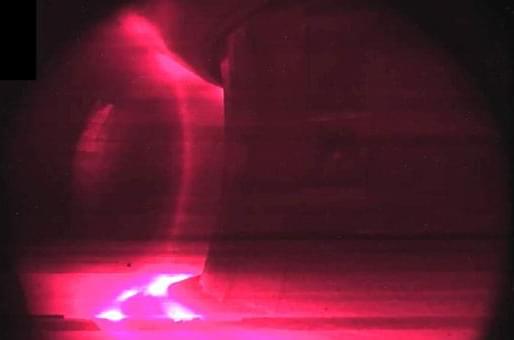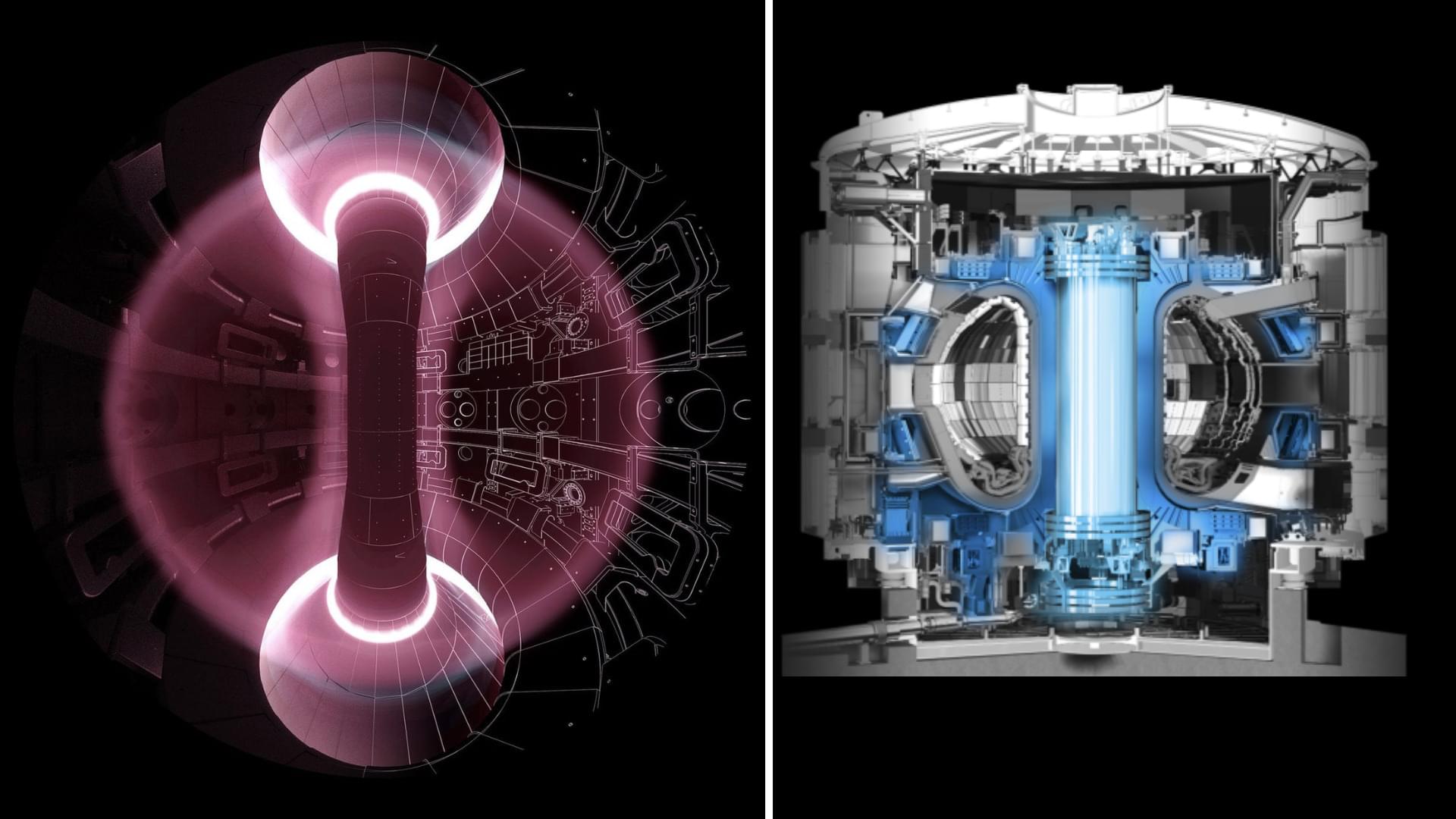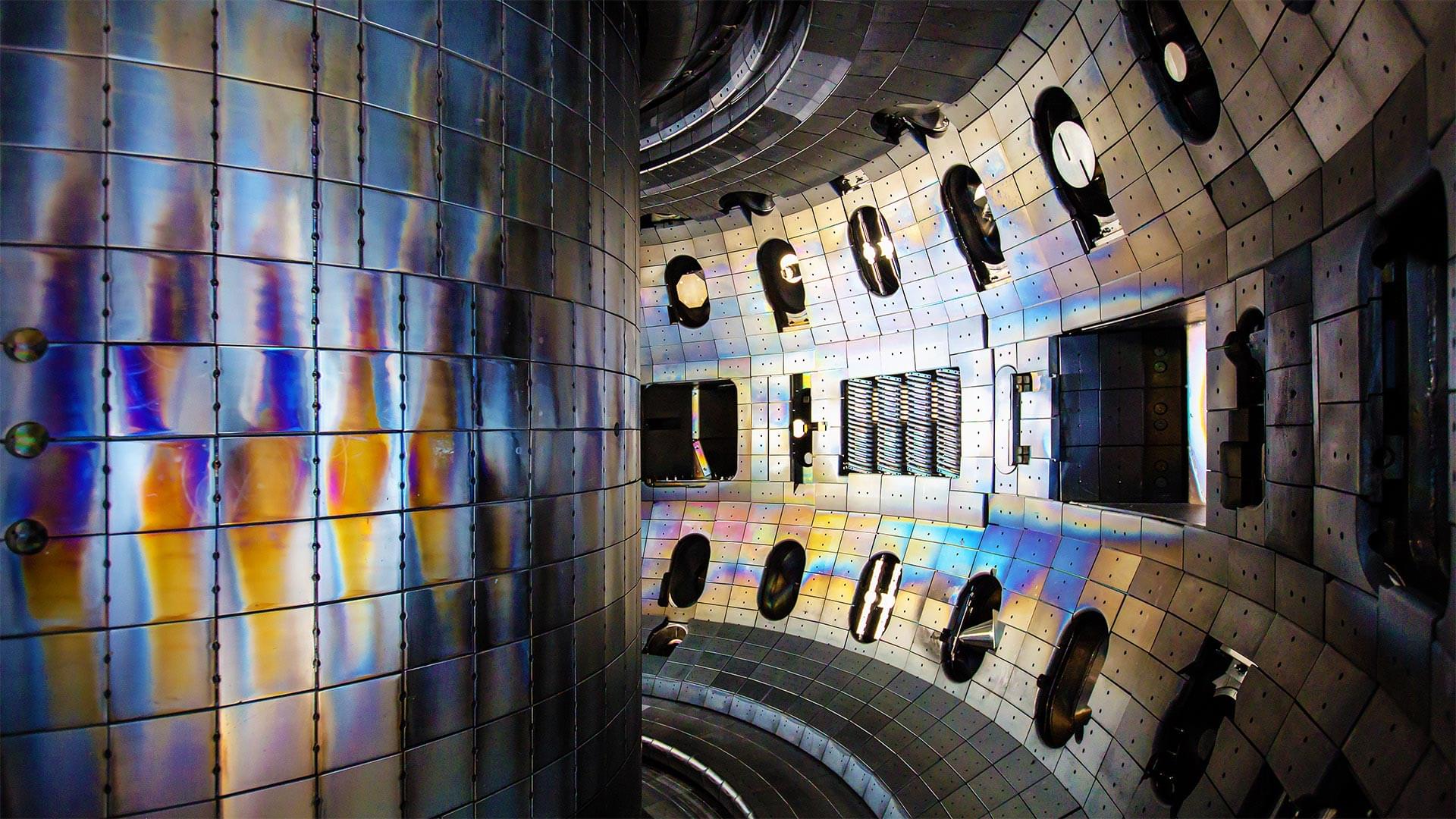Moltex’s WATSS technology transforms nuclear waste into a valuable energy resource, offering a cost-effective solution for the industry.



France just achieved a nuclear fusion breakthrough, making limitless energy virtually inevitable.
In a major achievement, France’s WEST Tokamak reactor has maintained a plasma reaction for over 22 minutes, setting a new world record in the quest for sustainable fusion energy.
énergie atomique et aux énergies alternatives (CEA), the experiment surpassed China’s previous record of 1,066 seconds, reaching 1,337 seconds of sustained plasma. + This milestone is a major step toward commercial fusion power, which promises unlimited, clean energy by harnessing the same process that powers the Sun. The challenge lies in achieving a self-sustaining reaction while maintaining extreme temperatures of up to 150 million°C (270 million°F) without damaging reactor components.
While WEST itself won’t become a commercial reactor, the data gathered will be instrumental in developing ITER, the world’s largest fusion project, currently under construction in southern France.
CEA scientists plan to extend reaction times further, increasing power levels and plasma stability. If successful, these advancements could bring humanity closer to realizing the long-held dream of clean, virtually limitless energy, potentially transforming global power generation in the future.
Learn more.
The future of space exploration is beyond imagination! From SpaceX Starship to NASA’s Artemis II, groundbreaking innovations are shaping the 2050 future world. In this video, we dive into amazing inventions you must see, including space elevators, nuclear-powered rockets, and space mining that could redefine our existence beyond Earth.
🌍 Explore the most futuristic and emerging technologies revolutionizing space travel, space stations, and massive satellite internet in outer space. Will Space-Based Solar Power solve Earth’s energy crisis? Could O’Neill Cylinders and Alderson Disks become the future of human colonies in space?
🔍 Get a detailed review of the latest advancements from SpaceX, NASA, ESA, and other space agencies working on secretive space planes and cutting-edge space habitats like Haven-2 Module and Eos-X Space.
💡 Topics Covered:
✅ SpaceX Starship & Mars Missions.
✅ NASA Artemis II & Future Moon Colonization.
✅ Space Elevators & Interplanetary Travel.
✅ Nuclear-Powered Rockets & Next-Gen Propulsion.
✅ Space Mining & Resource Extraction.
✅ Space Habitats – O’Neill Cylinders & Alderson Disks.
✅ Space-Based Solar Power – Unlimited Energy?
👨🚀 Join us on this journey into the future of space technology! If you’re excited about Future Space Technology That Will Change The World, hit that LIKE, SUBSCRIBE, and turn on notifications for more science and technology updates from 99techspot!

Renewable energy in Japan will receive a seismic shift via perovskite solar cells, the latest development that would change the way solar energy is viewed. Lightweight, flexible, and adaptable, these solar cells will provide a more viable means to producing energy within a city, responding to shortages of land and sustainable issues. Let’s see how Japan is benefiting from the PSC technology to bring about a green future.
Japan is currently utilizing its competitive advantages to lead the rest of the world into the new renewable energy age. Under its revised energy plan, the Ministry of Industry now prioritizes PSCs on Section 0 of its plan wherein Japan aims to develop PSC sections generating 20 gigawatts of electricity equivalent to 20 nuclear reactors by fiscal 2040.
The strategy was designed to be closely aligned with the country’s commitment to net-zero emissions by 2050. At the center of this strategy is Japan’s position as the second-largest iodine producer in the world, a necessary ingredient in the manufacturing of perovskite solar cells.

(Yicai) March 3 — China Fusion Energy, a state-owned pioneer in an experimental technology to produce unlimited amounts of clean energy by replicating processes of the sun, has gained almost CNY1.8 billion (USD240.3 million) in investment from two major power companies.
China Nuclear Power, another affiliate of Beijing-headquartered China National Nuclear Corporation, invested CNY1 billion into Fusion Energy, while Zhejiang province-based thermal power giant Zheneng Electric Power allocated CNY750 million (USD102.8 million), the two investors announced recently.
After these transactions, CNNC remains the largest shareholder of Fusion Energy, which is expected to receive more investment from state-owned enterprises in the future.

Researchers have developed a battery capable of converting nuclear energy into electricity through light emission, according to a new study.
Nuclear power plants generate about 20% of the electricity in the United States and produce minimal greenhouse gas emissions. However, they also generate radioactive waste, which poses risks to human health and the environment, making safe disposal a significant challenge.
To address this, a team led by researchers from The Ohio State University designed a system that harnesses ambient gamma radiation to generate electricity. By combining scintillator crystals—high-density materials that emit light when exposed to radiation—with solar cells, they successfully converted nuclear energy into an electric output powerful enough to run microelectronics, such as microchips.
Rufo Guerreschi.
https://www.linkedin.com/in/rufoguerreschi.
Coalition for a Baruch Plan for AI
https://www.cbpai.org/
0:00 Intro.
0:21 Rufo Guerreschi.
0:28 Contents.
0:41 Part 1: Why we have a governance problem.
1:18 From e-democracy to cybersecurity.
2:42 Snowden showed that international standards were needed.
3:55 Taking the needs of intelligence agencies into account.
4:24 ChatGPT was a wake up moment for privacy.
5:08 Living in Geneva to interface with states.
5:57 Decision making is high up in government.
6:26 Coalition for a Baruch plan for AI
7:12 Parallels to organizations to manage nuclear safety.
8:11 Hidden coordination between intelligence agencies.
8:57 Intergovernmental treaties are not tight.
10:19 The original Baruch plan in 1946
11:28 Why the original Baruch plan did not succeed.
12:27 We almost had a different international structure.
12:54 A global monopoly on violence.
14:04 Could expand to other weapons.
14:39 AI is a second opportunity for global governance.
15:19 After Soviet tests, there was no secret to keep.
16:22 Proliferation risk of AI tech is much greater?
17:44 Scale and timeline of AI risk.
19:04 Capabilities of security agencies.
20:02 Internal capabilities of leading AI labs.
20:58 Governments care about impactful technologies.
22:06 Government compute, risk, other capabilities.
23:05 Are domestic labs outside their jurisdiction?
23:41 What are the timelines where change is required?
24:54 Scientists, Musk, Amodei.
26:24 Recursive self improvement and loss of control.
27:22 A grand gamble, the rosy perspective of CEOs.
28:20 CEOs can’t really say anything else.
28:59 Altman, Trump, Softbank pursuing superintelligence.
30:01 Superintelligence is clearly defined by Nick Bostrom.
30:52 Explain to people what “superintelligence” means.
31:32 Jobs created by Stargate project?
32:14 Will centralize power.
33:33 Sharing of the benefits needs to be ensured.
34:26 We are running out of time.
35:27 Conditional treaty idea.
36:34 Part 2: We can do this without a global dictatorship.
36:44 Dictatorship concerns are very reasonable.
37:19 Global power is already highly concentrated.
38:13 We are already in a surveillance world.
39:18 Affects influential people especially.
40:13 Surveillance is largely unaccountable.
41:35 Why did this machinery of surveillance evolve?
42:34 Shadow activities.
43:37 Choice of safety vs liberty (privacy)
44:26 How can this dichotomy be rephrased?
45:23 Revisit supply chains and lawful access.
46:37 Why the government broke all security at all levels.
47:17 The encryption wars and export controls.
48:16 Front door mechanism replaced by back door.
49:21 The world we could live in.
50:03 What would responding to requests look like?
50:50 Apple may be leaving “bug doors” intentionally.
52:23 Apple under same constraints as government.
52:51 There are backdoors everywhere.
53:45 China and the US need to both trust AI tech.
55:10 Technical debt of past unsolved problems.
55:53 Actually a governance debt (social-technical)
56:38 Provably safe or guaranteed safe AI
57:19 Requirement: Governance plus lawful access.
58:46 Tor, Signal, etc are often wishful thinking.
59:26 Can restructure incentives.
59:51 Restrict proliferation without dragnet?
1:00:36 Physical plus focused surveillance.
1:02:21 Dragnet surveillance since the telegraph.
1:03:07 We have to build a digital dog.
1:04:14 The dream of cyber libertarians.
1:04:54 Is the government out to get you?
1:05:55 Targeted surveillance is more important.
1:06:57 A proper warrant process leveraging citizens.
1:08:43 Just like procedures for elections.
1:09:41 Use democratic system during chip fabrication.
1:10:49 How democracy can help with technical challenges.
1:11:31 Current world: anarchy between countries.
1:12:25 Only those with the most guns and money rule.
1:13:19 Everyone needing to spend a lot on military.
1:14:04 AI also engages states in a race.
1:15:16 Anarchy is not a given: US example.
1:16:05 The forming of the United States.
1:17:24 This federacy model could apply to AI
1:18:03 Same idea was even proposed by Sam Altman.
1:18:54 How can we maximize the chances of success?
1:19:46 Part 3: How to actually form international treaties.
1:20:09 Calling for a world government scares people.
1:21:17 Genuine risk of global dictatorship.
1:21:45 We need a world /federal/ democratic government.
1:23:02 Why people are not outspoken.
1:24:12 Isn’t it hard to get everyone on one page?
1:25:20 Moving from anarchy to a social contract.
1:26:11 Many states have very little sovereignty.
1:26:53 Different religions didn’t prevent common ground.
1:28:16 China and US political systems similar.
1:30:14 Coming together, values could be better.
1:31:47 Critical mass of states.
1:32:19 The Philadelphia convention example.
1:32:44 Start with say seven states.
1:33:48 Date of the US constitutional convention.
1:34:42 US and China both invited but only together.
1:35:43 Funding will make a big difference.
1:38:36 Lobbying to US and China.
1:38:49 Conclusion.
1:39:33 Outro

The advancement can enable turbulent analysis of entire nuclear fusion reactors.
“By utilizing deep learning on GPUs, we have reduced computation time by a factor of 1,000 compared to traditional CPU-based codes,” said the joint research team.
“This advancement represents a cornerstone for digital twin technologies, enabling turbulent analysis of entire nuclear fusion reactors or replicating real Tokamaks in a virtual computing environment.”
Researchers underlined that the proposed FPL-net can solve the FPL equation in a single step, achieving results 1,000 times faster than previous methods with an error margin of just one-hundred-thousandth, demonstrating exceptional accuracy.

Researchers at the Princeton Plasma Physics Laboratory are exploring how deuterium, a potential fusion fuel, interacts with boron-coated walls in fusion reactors. Their discoveries about fuel retention and the problematic role of carbon in trapping fuel are paving the way for more efficient fusion systems, such as ITER in France.

A research team, led by Professor Jimin Lee and Professor Eisung Yoon in the Department of Nuclear Engineering at UNIST, has unveiled a deep learning–based approach that significantly accelerates the computation of a nonlinear Fokker–Planck–Landau (FPL) collision operator for fusion plasma.
The findings are published in the Journal of Computational Physics.
Nuclear fusion reactors, often referred to as artificial sun, rely on maintaining a high-temperature plasma environment similar to that of the sun. In this state, matter is composed of negatively charged electrons and positively charged ions. Accurately predicting the collisions between these particles is crucial for sustaining a stable fusion reaction.